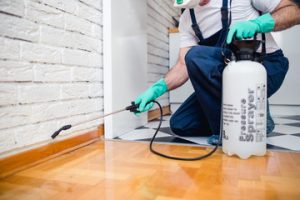Pomskies — a mix of Pomeranian and Siberian husky dogs — have larger-than-life personalities in small bodies. They thrive in homes where they receive consistent direction and plenty of mental and physical activity.

Responsible breeders use DNA testing to avoid passing along health conditions that both Pomeranians and Siberian huskies are predisposed to. Expect to brush your Pomsky at least twice a week and make peace with the inevitable shedding. Visit their Website to learn more.
Keeping your Pomsky physically active and mentally sharp are essential for the wellbeing of this intelligent breed. Adding daily exercise to your routine keeps your pup at a healthy weight and prevents him from developing behavioral issues like chewing or excessive barking. It also ensures that your dog is happy and content, which helps to strengthen the bond between you.
Regular daily walks and playtime in a secure, fenced area are the basics for satisfying your Pomsky’s physical exercise needs. However, if your Pomsky has piles of energy to burn, a standard walk might not be enough to keep him satisfied. To up the ante, you can try advanced exercises that challenge both your dog’s body and intellect. These activities can include obstacle courses, fetch, tug-of-war, and puzzle toys.
These advanced exercises can build your dog’s confidence and strengthen your relationship by requiring both of you to work together. Additionally, these types of games are fun and challenging, which makes them an effective alternative to the boring old walk.
Enrolling your Pomsky in nose work classes is another great way to up the ante on your dog’s physical and mental exercise. This type of training encourages your dog to use his natural abilities and rewards him with treats for finding hidden scents. As he gets more confident and proficient in this sport, you can increase the difficulty of the scents and hiding spots.
Aside from exercising your Pomsky, ensuring that you’re feeding him high-quality food and following his routine veterinary care regimen is essential to his health and happiness. Also, it’s a good idea to visit reputable Pomsky breeders who prioritize the health and welfare of their puppies. Responsible breeding practices like genetic testing are a great way to reduce the likelihood that your Pomsky inherits hereditary diseases. When looking for a reputable breeder, look for one that is affiliated with an organization that sets high standards for breeding and health testing. This ensures that your puppy is coming from a responsible source and has a high-quality pedigree. This is important since hereditary conditions can cause many complications in a dog’s life, including obesity, heart disease, and respiratory problems.
Training
Pomskies are intelligent dogs with plenty of energy, so it’s important to train them regularly. Proper training channels their natural energy into positive activities that promote mental and physical fitness. Training also helps you communicate with your dog, which strengthens the bond you share together. Start training your pomsky at a young age to help them learn basic commands and behaviors. Use treats to motivate them during training sessions, and give them lots of praise when they behave well. There are different training techniques, so choose the one that works best for your pomsky. Some respond better to the balanced method, which uses both positive and negative reinforcement (such as reprimanding bad behavior and rewarding good behavior).
Exercise is essential for a Pomsky’s health and wellbeing. Take them for a long walk or run in safe areas to burn excess energy and keep them fit. Be sure to bring water and snacks to prevent them from becoming dehydrated or overheated. Another fun way to get your dog moving is by playing fetch with a frisbee. It provides excellent cardiovascular exercise and stimulates their natural instinct to chase and catch objects.
Playing hide-and-seek with your pomsky is an engaging activity that gives them a chance to use their sense of smell to locate hidden toys or treats. You can begin with easy hiding spots and gradually increase the difficulty as your dog’s skills improve.
You can also enroll your pomsky in agility or flyball classes, which provide both physical and mental stimulation. These activities require your pomsky to follow specific commands, listen closely, and focus their attention. It’s a good idea to practice outside of class to reinforce and refine their skills.
Other fun and engaging activities include obedience training, canicross, which involves running or hiking with your dog while attached to a waist belt and bungee leash, and agility obstacle courses, which provide both physical and mental stimulation. Regular grooming is important, too, to maintain your pomsky’s beautiful coat and overall appearance. Also, schedule routine visits with a veterinarian near Polaris to monitor their health and catch any issues early.
Exercise
Pomskies get overexcited easily, and this can lead to bad behaviors like chewing or barking. A well-planned exercise routine can help manage your dog’s energy levels and prevent overexcitement. In addition to daily walks and playtime, try activities like nose work classes or agility training to keep your dog mentally engaged and physically fit. This can also help channel their curiosity and energy in a productive direction, rather than being destructive.
Because Pomskies are so curious and intelligent, they need lots of mental stimulation to prevent boredom or behavioral problems. Providing your dog with engaging toys and puzzles can help them focus their attention on an activity instead of being distracted by other things in the environment. You can even use a dog treadmill to give your Pomsky a safe and effective way to run and burn off excess energy.
If you want your Pomsky to be able to enjoy social outings with you without worrying about separation anxiety, then it’s important to properly train them. This can be done by teaching them basic commands, such as sit and stay, in a controlled setting with the aid of treats. As they progress, you can then move on to advanced commands, such as fetching a toy or maneuvering through weave poles.
Another excellent form of physical exercise is playing games with your Pomsky, such as frisbee or tug-of-war. This can be done indoors or outdoors, and you can gradually increase the length and intensity of your games to suit their energy level.
As they grow older, your Pomsky will likely require less vigorous exercise than when they were puppies. However, it’s still important to make sure they get plenty of daily physical activity to maintain their health and prevent boredom and weight issues. If you’re concerned about your dog’s fitness level, you can always ask a trainer or vet to recommend a fitness plan that’s right for them. Depending on their age and health status, your dog may also benefit from a regular wellness check-up with your veterinarian. This will help ensure that they’re healthy and fit and give you peace of mind.
Care
Taking your Pomsky for frequent walks, playing games with them, and making sure that they have their own bed and toys will make them feel loved. This will help to prevent separation anxiety. If your dog does develop separation anxiety, you will need to give them hope that you will return. This can be done by giving them an object that carries your scent or your t-shirt to keep with them while you are away. Do not raise your voice around them or yell at them. Raising your voice will only make them more anxious and increase the likelihood that they will bark or whine when you are not there.
Pomskys are still a relatively new breed, and their temperament can vary significantly from one puppy to another. It is important to find a responsible breeder who prioritizes the well-being of their puppies and is knowledgeable about the F1, F1b, and F2 generations and how they affect coat type and size variations. A good breeder will also conduct health testing on their breeding stock and be able to answer any questions you may have.
As with all dogs, it is important to take your Pomsky to the vet for regular checkups and a balanced diet. They also need to follow a routine for exercise and potty breaks. This will ensure that they do not become overweight or develop any other illnesses.
The Pomsky is a very intelligent dog. As such, they require daily playtime to avoid boredom and destructive behaviors like chewing or scratching household items. It is recommended that you train them at least three times per day in short sessions of five minutes each. This will ensure that they do not lose interest or get tired during training and will be more likely to remember their commands.
A Pomsky requires regular brushing to keep their double coat free of tangles and mats. However, you should not shave them because this will cause irreversible damage to their thick coat, which helps protect them from UV rays and regulates body temperature. They should be bathed every 4 to 6 weeks to maintain proper skin and coat health.
